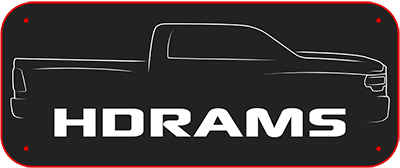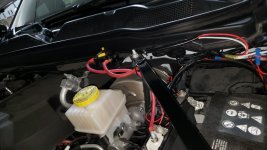I fitted lithium in tub and ran 2 gauge (35mm) from Uber the bonnet to the dc2dc charger. Using 200amp circuit breaker on positive battery. Neg cable connected to neg post of battery.
The dc2dc is fitted in tub next to battery. It has 70amp breaker on input, output and 40amp on solar input. I used the 2 gauge wire to the lithium battery.
I also use the ignition sense on the dc2dc which is connected to the ignition power found near the spare wheel.
then I run two Anderson connectors using 6 gauge (16mm). One via a 300 amp continuous rated solenoid (ignition sense) and the other from the lithium battery (100amp circuit breaker).
Red Anderson for solar input (I really fitted a grey one and labelled it solar).
been running for three years and the trailer dc2dc charger gives full 40amps charge to lithium in trailer.
Please be aware that if you have four lithium batteries rated at 100 amp hour, the max current you should draw is 100amp (NOT 4*100= 400 amp). You run the risk of blowing your BMS and lithium batteries if you draw more than 100amp in this example.
The dc2dc is fitted in tub next to battery. It has 70amp breaker on input, output and 40amp on solar input. I used the 2 gauge wire to the lithium battery.
I also use the ignition sense on the dc2dc which is connected to the ignition power found near the spare wheel.
then I run two Anderson connectors using 6 gauge (16mm). One via a 300 amp continuous rated solenoid (ignition sense) and the other from the lithium battery (100amp circuit breaker).
Red Anderson for solar input (I really fitted a grey one and labelled it solar).
been running for three years and the trailer dc2dc charger gives full 40amps charge to lithium in trailer.
Please be aware that if you have four lithium batteries rated at 100 amp hour, the max current you should draw is 100amp (NOT 4*100= 400 amp). You run the risk of blowing your BMS and lithium batteries if you draw more than 100amp in this example.

